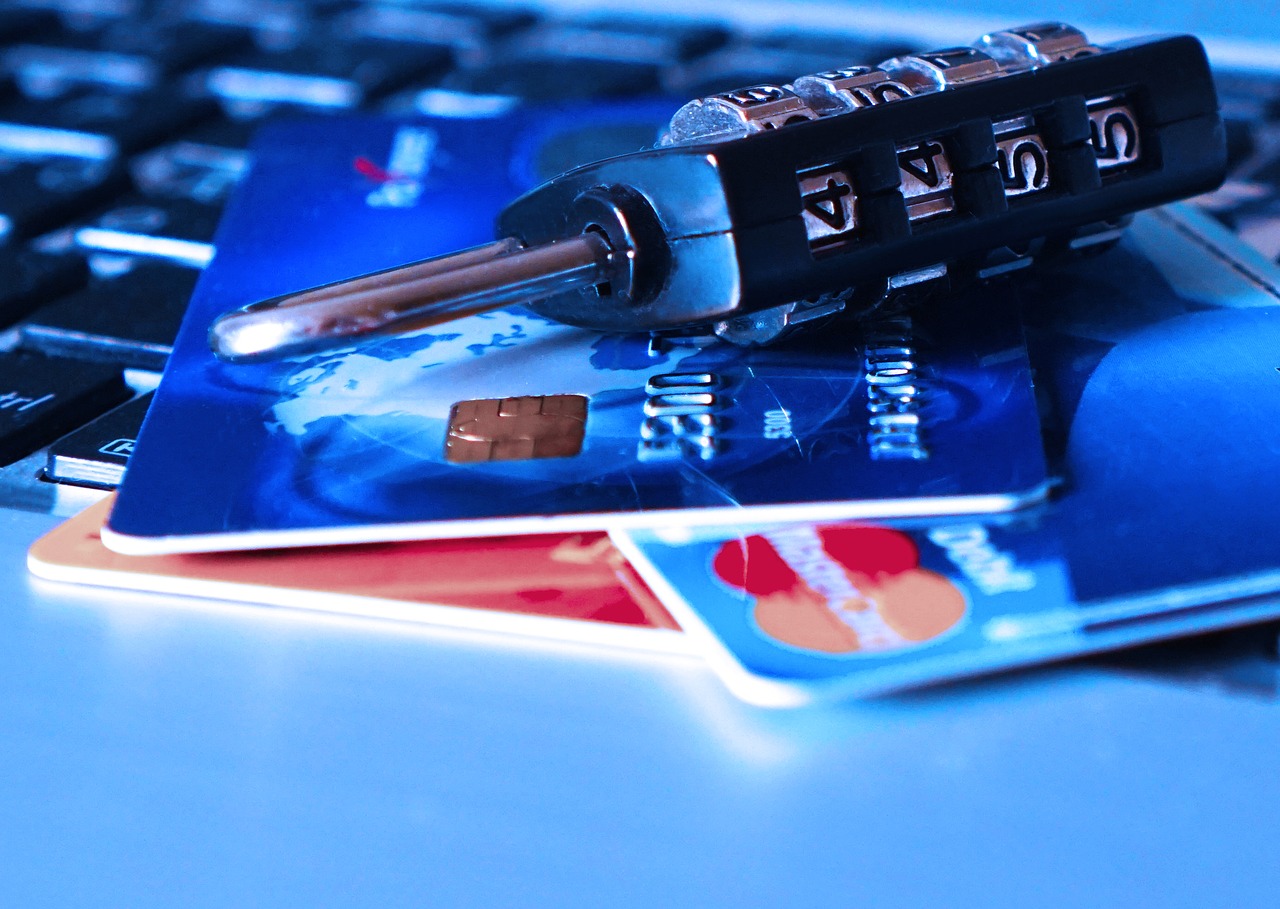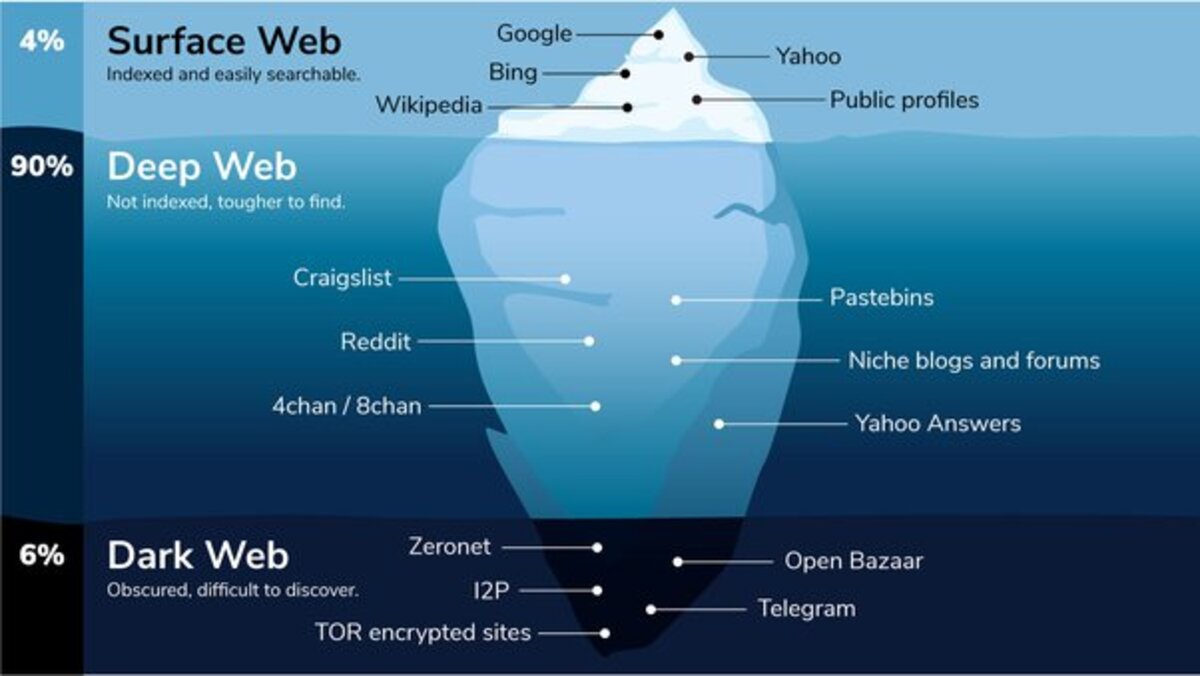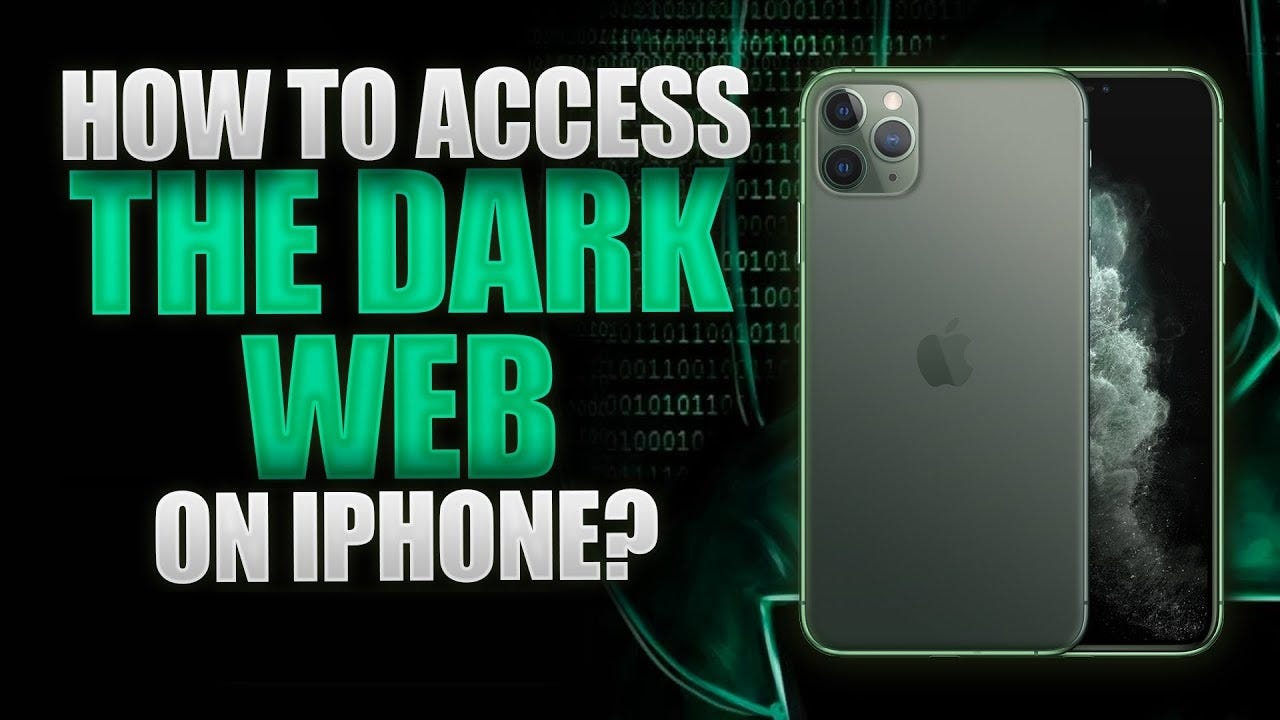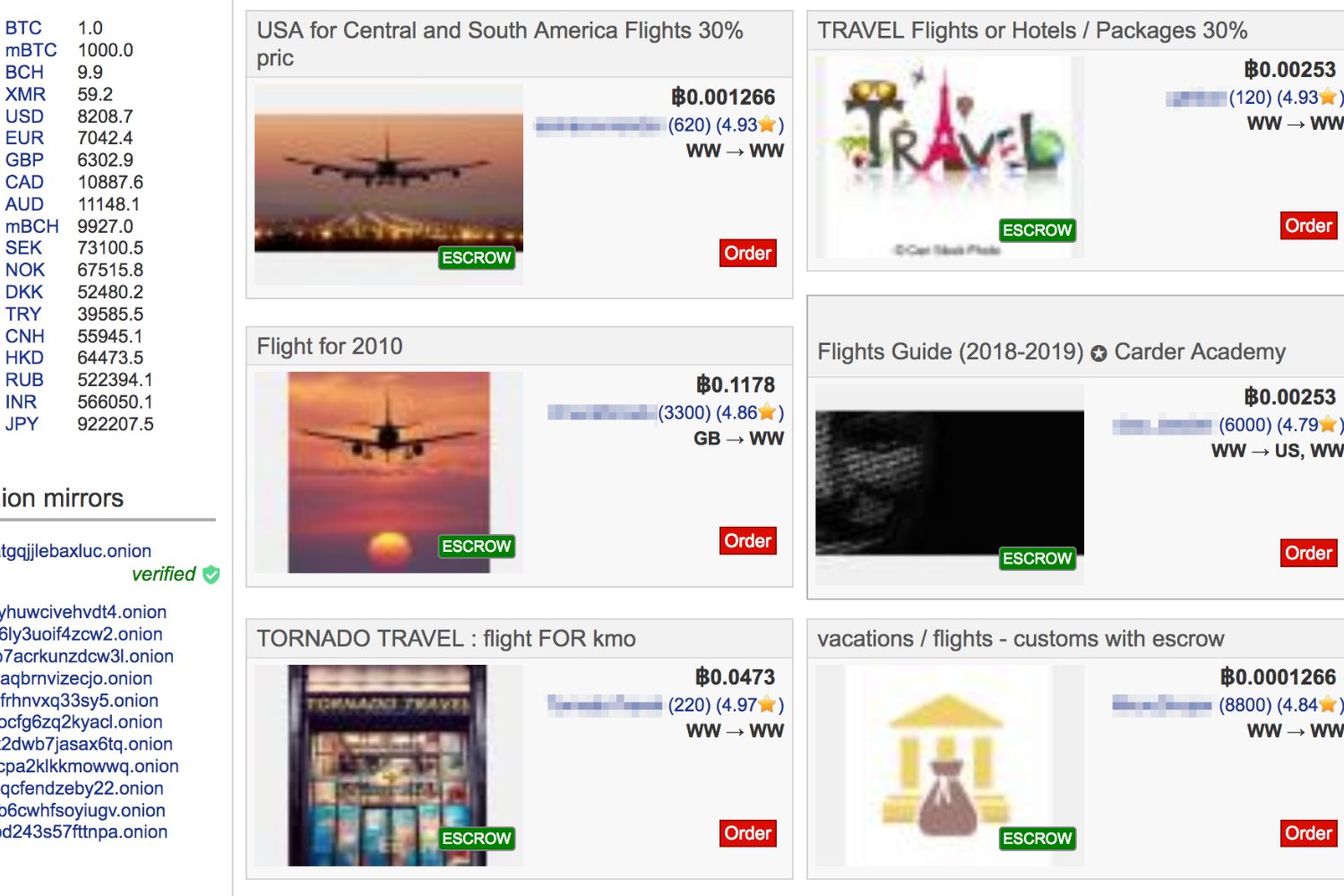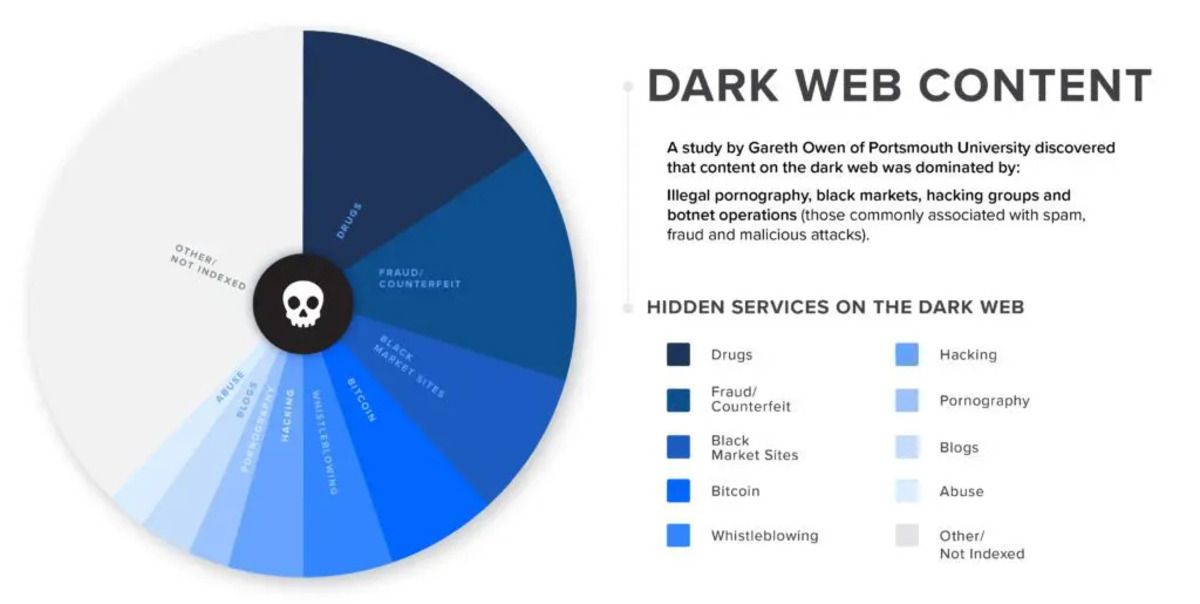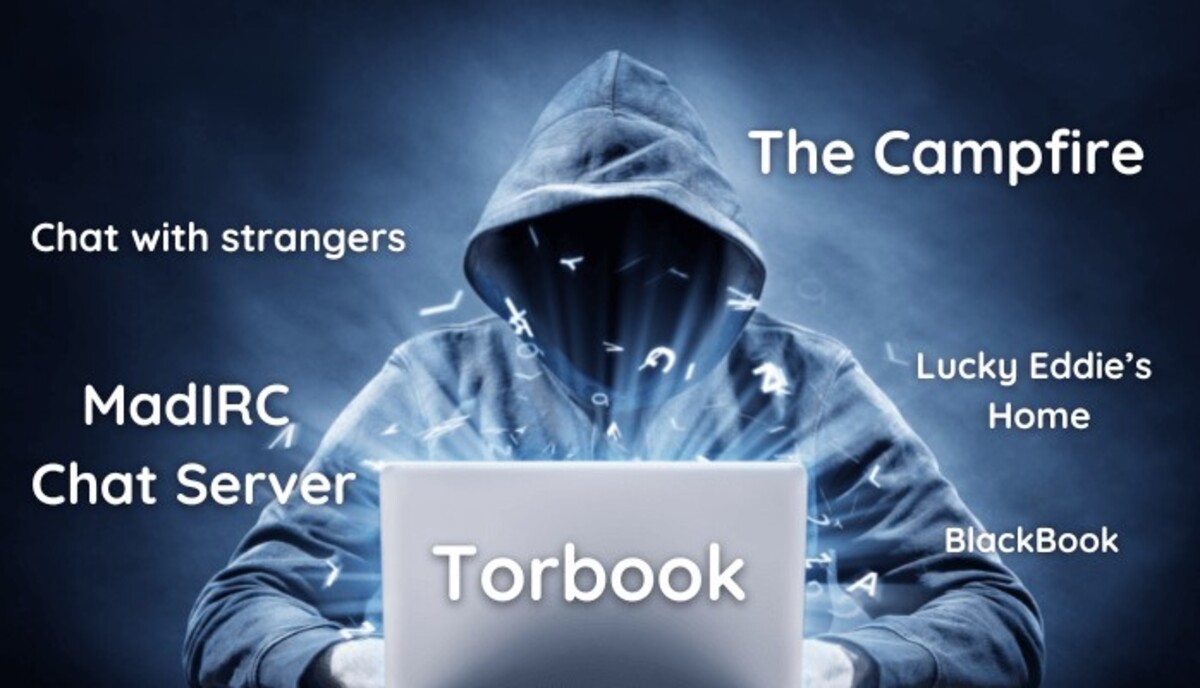Introduction
With the rise of technology and the internet, a whole new realm of online marketplaces has emerged, including the infamous Dark Web. The Dark Web is a hidden part of the internet that is not indexed by search engines and can only be accessed through specific software or networks. It has gained notoriety for being a hub for illicit activities, such as selling drugs, weapons, stolen data, and other illegal goods and services.
While it is important to emphasize that engaging in any illegal activities is strictly prohibited and unethical, it is worth understanding how the Dark Web operates and the risks associated with it. This knowledge can help individuals protect themselves and their personal information from potential threats that might arise from this hidden online world.
In this article, we will delve into the Dark Web and provide a step-by-step guide on how to explore and make purchases within its marketplaces. However, it is essential to remember that the Dark Web is a high-risk environment, and unauthorized activities are illegal in most jurisdictions. This article aims to serve as an educational resource rather than promoting or encouraging any illegal activities.
What is the Dark Web?
The Dark Web is a hidden part of the internet that is not accessible through traditional search engines or web browsers. It exists on encrypted networks and requires special software, such as Tor (The Onion Router), to access. The Dark Web is known for providing users with anonymity and privacy, making it an attractive platform for illicit activities.
Unlike the surface web, which is the portion of the internet that is searchable and accessible to the general public, the Dark Web operates on a different infrastructure. It comprises websites, forums, and marketplaces that exist on anonymous networks, making it difficult or almost impossible to track users or expose their true identities.
One of the key characteristics of the Dark Web is the use of cryptocurrencies like Bitcoin for transactions. Cryptocurrencies provide an additional layer of anonymity, as they are decentralized and not regulated by any government or financial institution. This makes it challenging to trace financial transactions and adds an extra level of security for users conducting illegal activities.
The purpose of the Dark Web was originally to protect the privacy and security of individuals, especially those living in oppressive countries or engaging in whistleblowing activities. However, it has since become a thriving hub for illegal activities, including drug trafficking, hacking, counterfeit goods, weapons sales, and even hiring hitmen.
It is crucial to recognize that not everything on the Dark Web is illegal or malicious. Some legitimate websites and platforms exist, offering anonymity, private communications, and protection of sensitive information. However, it is essential to exercise extreme caution and understand the risks involved before venturing into this hidden realm.
Understanding the Risks
Exploring the Dark Web comes with inherent risks and potential dangers. It is vital to be aware of these risks and take necessary precautions to protect yourself and your personal information.
First and foremost, engaging in any illegal activities on the Dark Web can have severe legal consequences. Law enforcement agencies actively monitor Dark Web marketplaces, and participating in illegal transactions can lead to criminal charges and prosecution.
Furthermore, the Dark Web is rife with scams and fraudulent schemes. Sellers may misrepresent their products or take payment without delivering anything in return. It is challenging to verify the credibility and legitimacy of sellers, putting buyers at a high risk of being scammed.
In addition to financial risks, there are significant cybersecurity concerns associated with the Dark Web. Malicious actors and hackers often target unsuspecting users, attempting to gain access to their personal information, financial accounts, or installing malware on their devices.
Another critical risk is the exposure of personal information. While the Dark Web offers users a certain level of anonymity, there have been instances where user data has been compromised and exposed. This puts individuals at risk of being targeted by criminals or having their sensitive information sold to third parties.
It is worth noting that accessing the Dark Web itself poses risks. Law enforcement agencies, intelligence agencies, and hackers frequently monitor activities on the Dark Web. While it is difficult to trace users, there is always a possibility of being identified and targeted.
Given the potential risks and dangers, caution and discretion should be a top priority when venturing into the Dark Web. Understanding the risks involved and taking appropriate measures to protect yourself are essential steps to mitigate potential harm.
Step 1: Set Up a Secure Environment
Before diving into the Dark Web, it is crucial to create a secure environment to protect yourself and your personal information. Here are some steps to follow:
1. Use a Secure Operating System: Consider using a privacy-focused operating system like Tails or Whonix. These operating systems are designed to prioritize security and anonymity.
2. Utilize a Virtual Private Network (VPN): A VPN encrypts your internet traffic, making it more difficult for anyone to monitor or intercept your online activities. Choose a reputable VPN service provider with a strict no-logs policy.
3. Update and Secure Your Devices: Ensure that your operating system, antivirus software, and applications are up to date. Implement strong passwords and enable two-factor authentication whenever possible.
4. Create a Dedicated Email Address: Use a separate email address specifically for Dark Web activities. This will help isolate Dark Web communications and prevent any potential impact on your personal or professional accounts.
5. Disable Location Services: Turn off any location services on your devices, as they can provide clues about your identity and physical whereabouts.
6. Secure Your Wi-Fi: Protect your Wi-Fi network with a strong, unique password. Consider using WPA2 or WPA3 encryption. This will help prevent unauthorized access to your network.
7. Use Encryption: Encrypt your files, messages, and communications with tools like Pretty Good Privacy (PGP) or VeraCrypt. This adds an extra layer of security to your sensitive information.
8. Regularly Backup Your Data: Create backups of your important files and store them in a secure location. This will prevent any potential loss or damage to your data during your Dark Web exploration.
By following these steps, you can establish a secure environment that minimizes the risks associated with exploring the Dark Web. Keep in mind that while these measures enhance your security, they do not guarantee absolute anonymity or invulnerability. Remaining cautious and vigilant is imperative throughout the entire process.
Step 2: Obtain Required Tools
To access and navigate through the Dark Web, you will need specific tools and software. Here are the essential tools you should obtain:
1. Tor Browser: The Tor browser is the most commonly used tool for accessing the Dark Web. It allows you to browse websites on Tor’s network anonymously. Download and install the Tor browser from the official Tor Project website to ensure you’re using a legitimate version.
2. VPN Software: While not mandatory, using a virtual private network (VPN) can add an extra layer of security to your connection. A VPN encrypts your internet traffic and masks your IP address, making it harder for others to trace your online activities. Choose a reliable VPN service that prioritizes privacy and does not keep logs of your browsing history.
3. PGP Encryption Software: Pretty Good Privacy (PGP) is a widely-used encryption tool that allows you to securely communicate with others on the Dark Web. PGP encrypts your messages so that only the intended recipient can decrypt and read them. GnuPG (GPG) is a popular open-source software that implements PGP encryption.
4. Bitcoin Wallet: Since cryptocurrencies like Bitcoin are commonly used on the Dark Web for transactions, you will need a Bitcoin wallet. Choose a reputable and secure wallet service to store your Bitcoins. Make sure to follow best practices for securing your wallet, such as using strong passwords and enabling two-factor authentication.
5. Antivirus and Firewall: Install a reliable antivirus software and enable a firewall to protect your devices from malware, viruses, and other cybersecurity threats. Regularly update your antivirus software and perform scans to ensure your system is safeguarded.
6. Secure File-Sharing Software: If you plan on downloading or sharing files on the Dark Web, using secure file-sharing software is essential. Look for tools that offer end-to-end encryption and prioritize security and privacy.
Ensure that you download these tools from official sources to avoid counterfeit or malicious versions. Be cautious when obtaining tools from third-party websites, as they may contain malware or compromise your security.
By acquiring these required tools, you’ll be equipped to navigate and interact within the Dark Web. Remember to follow the next steps closely to maintain your security and anonymity throughout your journey on the Dark Web.
Step 3: Secure Your Identity
When venturing into the Dark Web, it is crucial to take measures to secure your identity and maintain your anonymity. Here are some steps to help protect your identity:
1. Use a Pseudonym: Create a unique pseudonym or username that you will use exclusively on the Dark Web. Avoid using any personal information that could be linked back to your real identity.
2. Avoid Using Personal Email: Create a separate email address that you will only use for Dark Web activities. Avoid using any personal information in the email address, and consider using an encrypted email service for an added layer of security.
3. Disable WebRTC: WebRTC is a technology that can potentially leak your real IP address. To prevent this, disable WebRTC in your browser or use browser extensions that can block this feature.
4. Disable JavaScript: In the Tor browser settings, consider disabling JavaScript to prevent potential vulnerabilities or exploits that could compromise your identity.
5. Clear Cookies and Cache: Regularly clear your browser’s cookies and cache to minimize the chances of being tracked or identified by websites on the Dark Web.
6. Use Virtual Machines or Tails OS: For an extra layer of security, consider using virtual machines or privacy-focused operating systems like Tails OS, which leaves minimal traces and enhances your online privacy.
7. Be Cautious of Metadata: Avoid sharing files or images that contain metadata or any information that could be used to trace their origin. Scrub the metadata from files before sharing them on the Dark Web.
8. Avoid Social Media Connections: Refrain from linking your Dark Web activities to any of your social media accounts. Avoid revealing any personal information or connections that could potentially expose your identity.
By following these steps, you can better protect your identity and maintain anonymity while exploring the Dark Web. However, it is important to note that no method is foolproof, and it is essential to exercise caution and be mindful of the risks involved at all times.
Step 4: Finding a Dark Web Marketplace
Finding a reliable and trustworthy Dark Web marketplace is essential to ensure a safe and secure experience. Here are some steps to help you find a Dark Web marketplace:
1. Research Trusted Sources: Begin by researching and gathering information from reputable sources, such as Dark Web forums or discussions within the online privacy community. Look for recommendations and reviews from trusted users who have experience with Dark Web marketplaces.
2. Utilize Hidden Wiki: The Hidden Wiki is a popular starting point for newcomers to the Dark Web. It contains links to various Dark Web websites, including marketplaces. However, exercise caution, as some links may be unreliable or lead to illegal activities.
3. Join Dark Web Forums: Participating in Dark Web forums can provide valuable insights and recommendations. Engage with the community, ask for recommendations, and gain knowledge about the latest marketplaces and their reputations.
4. Check Dark Web Marketplaces Directory: Several online directories list Dark Web marketplaces, their URLs, and user reviews. These directories can help you discover marketplaces that align with your interests and requirements.
5. Verify Marketplace Reputation: Before accessing a marketplace, research its reputation and credibility. Look for feedback and reviews from previous buyers and sellers. Avoid marketplaces with a high number of negative reviews or reports of scams and fraudulent activities.
6. Verify Vendor Ratings: Within marketplaces, vendors often have ratings and reviews from previous customers. Take the time to review these ratings and read the feedback to make informed decisions about which vendors to trust.
7. Consider Escrow Services: Look for marketplaces that offer escrow services, which help protect buyers by holding funds until the buyer receives the product or service as expected. Escrow services reduce the risk of potential scams or non-delivery of goods.
8. Stay Updated: Dark Web marketplaces are constantly evolving and being shut down. Stay up to date with the latest information by following credible sources and forums. This will help you find active and reliable marketplaces.
Remember, engaging in illegal activities on the Dark Web is strictly prohibited. Exercise caution, protect your personal information, and be aware of the risks involved at all times when navigating Dark Web marketplaces.
Step 5: Evaluating Sellers and Products
When considering a purchase on a Dark Web marketplace, it is essential to carefully evaluate sellers and the products they offer. Here are some steps to follow when evaluating sellers and products:
1. Read Seller Profiles: Take the time to read through the seller’s profile and check their ratings and feedback from previous buyers. Look for sellers with a good reputation and positive reviews. Avoid sellers with a high number of negative ratings.
2. Review Product Descriptions: Carefully read the product descriptions provided by the seller. Look for detailed information about the product, including its specifications, quantity, shipping details, and any guarantees or warranties offered. Ensure that the description matches your expectations.
3. Consider Seller Experience: Evaluate the seller’s experience and longevity on the marketplace. Sellers who have been active for a significant period are more likely to be trustworthy and reliable. Avoid new or unverified sellers who may not have established a reputation yet.
4. Check Communication and Responsiveness: Contact the seller through encrypted messaging within the marketplace and assess their responsiveness. Prompt and clear communication is a good sign of a reliable seller. Avoid sellers who are unresponsive or hesitate to answer your questions.
5. Analyze Pricing and Reviews: Compare prices of similar products from different sellers. Prices that seem too good to be true may indicate low-quality or fraudulent items. Additionally, read customer reviews and feedback specific to the product to gain insight into its quality and authenticity.
6. Research Vendor Disputes: Investigate any disputes or negative feedback associated with the seller. Look for patterns of complaints or issues related to product quality, delivery times, or fraudulent activities. Avoid sellers with a history of unresolved disputes.
7. Consider Vendor Location: Take note of the vendor’s location, as it can impact shipping times and customs regulations. Determine if their location aligns with your expectations for delivery. Be cautious of vendors located in high-risk countries with a reputation for fraudulent activities.
8. Trust Your Intuition: Trust your instincts and use common sense when evaluating sellers and products. If something feels suspicious or too good to be true, it is better to err on the side of caution and find an alternative seller.
By carefully evaluating sellers and products, you can enhance your chances of having a positive buying experience on the Dark Web. However, remember that there are risks involved, and engaging in any illegal activities or purchasing illicit goods is both unethical and illegal.
Step 6: Making a Purchase
Once you have thoroughly evaluated the seller and their products on the Dark Web, you can proceed with making a purchase. Here are the steps to follow when making a purchase:
1. Confirm Availability: Ensure that the desired product is currently available and in stock. Some sellers may list products that are no longer available, leading to delays or disappointments.
2. Proceed with Security Measures: Use the Tor browser and VPN to maintain your anonymity and protect your online identity while making the purchase. Remember to disable JavaScript and clear cookies to minimize traceability.
3. Initiate Communication: Establish communication with the seller using the marketplace’s messaging system. Inquire about any additional details, such as shipping options, packaging methods, and preferred payment methods.
4. Negotiate if Applicable: Depending on the product or service, negotiation may be possible. Discuss any potential discounts or deals with the seller. However, be mindful that some sellers may not entertain negotiations.
5. Payment Method: Follow the seller’s instructions regarding the preferred method of payment. On the Dark Web, cryptocurrencies like Bitcoin are commonly used for transactions due to their anonymity. Use a secure Bitcoin wallet to transfer the payment.
6. Confirm Shipping Details: Provide the necessary shipping details, such as a secure address or drop point. Consider using a separate address from your residential or professional location to maintain privacy.
7. Review and Agree to Terms: Carefully read and understand the seller’s terms and conditions, including any refund or dispute resolution policies. Only proceed with the purchase if you agree to these terms.
8. Follow OpSec Measures: During the purchase process, remember to adhere to operational security (OpSec) measures. Avoid sharing unnecessary personal information or revealing any identifying details that could compromise your identity.
9. Retain Communication Records: Keep a record of all communication with the seller, including messages, product descriptions, and shipping details. These records may prove useful in case of any issues or disputes that may arise.
10. Confirm Receipt of the Product: Once you receive the package, confirm its contents and verify that everything is as expected. If there are any discrepancies or issues, address them with the seller according to their established procedures.
By following these steps, you can proceed with making a purchase on the Dark Web while maintaining security and privacy. Remember to exercise caution, be aware of the associated risks, and always comply with legal and ethical norms.
Step 7: Ensuring Anonymity in Payment
Protecting your anonymity during the payment process on the Dark Web is crucial. Here are some steps to ensure anonymity when making a payment:
1. Use Cryptocurrencies: Cryptocurrencies like Bitcoin are widely accepted and provide a high level of anonymity. Set up a secure Bitcoin wallet and use it to make your payment. Avoid using payment methods that can be easily traced or linked back to your real identity.
2. Mix and Tumble Bitcoins: Consider using a mixing or tumbling service to enhance your anonymity. These services help obscure the transaction trail by mixing your Bitcoins with those of others, making it challenging to trace the origin.
3. Utilize Multiple Wallets: To further enhance anonymity, use multiple Bitcoin wallets for different transactions. This prevents the linkage of transactions and adds an extra layer of privacy.
4. Access the Bitcoin Network Through Tor: Use the Tor browser or connect to the Bitcoin network using the Tor network to maintain your anonymity. This hides your IP address and prevents anyone from tracking your transactions back to your real identity.
5. Follow Best Practices: Apply best practices for secure Bitcoin transactions, such as using strong passwords, enabling two-factor authentication on your wallet, and regularly updating your wallet software.
6. Avoid Providing Personal Information: Do not provide any personal information or identifiable details during the payment process. Avoid using payment methods that require such information, as they can compromise your anonymity.
7. Check for SSL Encryption: Before making a payment, ensure that the website or marketplace you are using has a secure SSL (Secure Socket Layer) encryption. Look for the padlock icon in the browser’s address bar to verify the presence of SSL encryption.
8. Exercise Caution with Wallet Exchanges: Be cautious when using wallet exchange services or third-party platforms to exchange cryptocurrencies. Choose reputable services that prioritize security and privacy.
9. Be Mindful of Metadata: Avoid sharing transaction-related metadata that could link your payment to your identity. Scrub any metadata from files or documents before sharing or uploading them.
10. Securely Dispose of Payment Records: Once the payment is completed, securely dispose of any records or documentation related to the transaction. This helps minimize any potential linkages between you and the payment.
By following these steps, you can ensure a higher level of anonymity when making payments on the Dark Web. However, it is important to note that no method is foolproof, and remaining cautious and vigilant is key to protecting your privacy.
Step 8: Receiving Your Package
Receiving packages from Dark Web purchases requires careful consideration to maintain security and privacy. Here are some steps to follow when receiving your package:
1. Utilize a Secure Delivery Address: Use a secure delivery address that cannot be easily traced back to your real identity. Consider using a P.O. Box, a local postal store, or a trusted friend’s address for added privacy.
2. Monitor Delivery Status: Keep track of the package’s delivery status using the provided tracking information. Be aware of the estimated delivery date and ensure someone is available to receive the package.
3. Maintain OpSec Measures: When receiving the package, exercise operational security (OpSec) measures to protect your identity. Avoid drawing attention to the package’s contents or its origin.
4. Inspect the Package: Carefully inspect the package upon receipt. Verify that the packaging is intact and shows no signs of tampering. If there are any discrepancies or signs of damage, document and photograph the package before opening it.
5. Open the Package Securely: Open the package in a secure and discreet location. Avoid using any personal or identifiable information that may be linked to your real identity.
6. Verify Contents: Compare the received items to the product description to ensure they match. Check for any damage or defects that were not mentioned by the seller. If there are any issues, contact the seller according to their specified procedures.
7. Dispose of Packaging Securely: Dispose of the packaging in a manner that does not reveal its contents or origin. Remove any labels or shipping information that could potentially be traced back to you.
8. Assess Seller Feedback: Leave feedback for the seller, sharing your experience and providing an honest review of the transaction. This helps other buyers make informed decisions and helps maintain the integrity of the Dark Web marketplace.
9. Document Purchase Records: Maintain a record of the purchase, including receipts, shipping information, and any communication with the seller. This documentation might be useful in case of any disputes or issues that may arise.
10. Keep Personal Details Separate: Avoid including any personal or identifiable information when contacting the seller about the received package. Use the marketplace’s messaging system or an anonymous email address for communication.
By following these steps, you can safely and discreetly receive packages from Dark Web purchases. However, always remember to exercise caution, comply with legal and ethical norms, and stay informed about any changes or risks associated with Dark Web marketplaces.
Step 9: Maintaining Security and Privacy
Maintaining security and privacy is a continuous process when engaging in activities on the Dark Web. Here are some essential steps to help you maintain your security and privacy:
1. Regularly Update Security Software: Keep your operating system, antivirus software, and firewall updated regularly. Apply the latest security patches and ensure your software can defend against new threats.
2. Use Strong, Unique Passwords: Create strong and unique passwords for all your Dark Web accounts and platforms. Use a password manager to securely store and manage your passwords.
3. Enable Two-Factor Authentication: Enable two-factor authentication (2FA) whenever possible to add an additional layer of security to your accounts. This adds an extra step, usually a temporary code sent to your mobile device, to verify your identity during logins.
4. Be Aware of Phishing Attempts: Be cautious of phishing attempts on the Dark Web. Do not click on suspicious links or provide personal information to untrusted sources. Be vigilant and verify the legitimacy of websites and communications.
5. Regularly Clear Browser Data: Clear your browser’s cache, cookies, and browsing history regularly to minimize any traces of your online activities. This helps maintain privacy and reduces the risk of information being compromised.
6. Securely Dispose of Physical Records: If you have any physical records related to your Dark Web activities, such as shipping receipts or product documentation, dispose of them securely. Shred or destroy documents to prevent them from falling into the wrong hands.
7. Avoid Public Wi-Fi: Avoid using public Wi-Fi networks when accessing the Dark Web. Public networks are often less secure and prone to eavesdropping. If necessary, use a reliable VPN to encrypt your internet traffic when connected to public Wi-Fi.
8. Limit Personal Information Sharing: Minimize the sharing of personal information on the Dark Web. Be cautious of providing unnecessary details or sharing sensitive information that can be linked back to your real identity.
9. Regularly Backup Data: Create regular backups of your important data and store it securely. This ensures that you have a copy of your information in case of loss or compromise.
10. Stay Informed: Stay updated on the latest security practices, privacy tools, and Dark Web trends. Be aware of any changes in regulations or potential risks associated with the Dark Web.
By following these steps and staying vigilant, you can better safeguard your security and privacy while engaging with the Dark Web. Remember to remain responsible, respect legal boundaries, and prioritize ethical conduct throughout your Dark Web activities.
Conclusion
Exploring the Dark Web can be an intriguing and mysterious experience, but it is important to approach it with caution and a strong understanding of the risks involved. While the Dark Web offers anonymity and privacy, it is also a breeding ground for illegal activities and cybercrime.
In this article, we have provided a step-by-step guide to help you navigate the Dark Web, from setting up a secure environment to evaluating sellers and making purchases. It is essential to emphasize that engaging in any illegal activities is strictly prohibited and unethical.
Protecting your security and privacy should always be a top priority. Use secure operating systems, encrypt your communications, and secure your devices. Utilize tools like the Tor browser, VPNs, and encrypted messaging services to maintain anonymity.
When making purchases on the Dark Web, evaluate sellers and their products carefully. Read reviews, check ratings, and be cautious of scams or fraudulent activities. Securely make payments using cryptocurrencies like Bitcoin, and maintain anonymity throughout the process.
Remember, the Dark Web is a high-risk environment, and there are potential legal consequences for engaging in illegal activities. Therefore, it is crucial to stay within the boundaries of the law and prioritize ethical conduct.
Lastly, staying informed and continuously assessing and upgrading your security measures is vital. Remain vigilant, adapt to evolving risks, and be mindful of any changes in regulations or best practices.
By following these guidelines and understanding the risks associated with the Dark Web, you can better protect yourself and make informed decisions if you choose to explore this hidden part of the internet. Always prioritize your security, privacy, and adherence to legal and ethical norms above all else.










